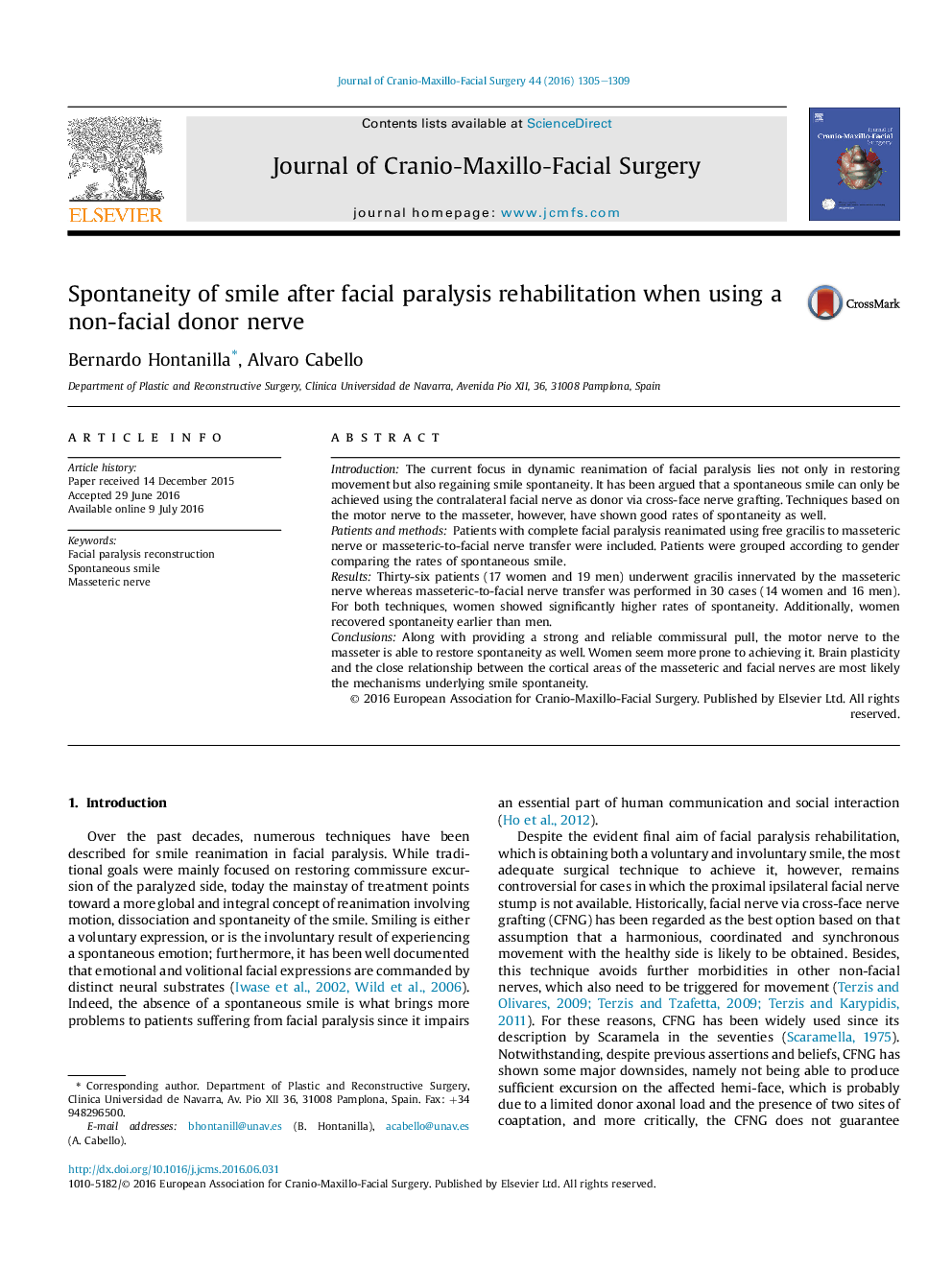| کد مقاله | کد نشریه | سال انتشار | مقاله انگلیسی | نسخه تمام متن |
|---|---|---|---|---|
| 3141997 | 1406811 | 2016 | 5 صفحه PDF | دانلود رایگان |
IntroductionThe current focus in dynamic reanimation of facial paralysis lies not only in restoring movement but also regaining smile spontaneity. It has been argued that a spontaneous smile can only be achieved using the contralateral facial nerve as donor via cross-face nerve grafting. Techniques based on the motor nerve to the masseter, however, have shown good rates of spontaneity as well.Patients and methodsPatients with complete facial paralysis reanimated using free gracilis to masseteric nerve or masseteric-to-facial nerve transfer were included. Patients were grouped according to gender comparing the rates of spontaneous smile.ResultsThirty-six patients (17 women and 19 men) underwent gracilis innervated by the masseteric nerve whereas masseteric-to-facial nerve transfer was performed in 30 cases (14 women and 16 men). For both techniques, women showed significantly higher rates of spontaneity. Additionally, women recovered spontaneity earlier than men.ConclusionsAlong with providing a strong and reliable commissural pull, the motor nerve to the masseter is able to restore spontaneity as well. Women seem more prone to achieving it. Brain plasticity and the close relationship between the cortical areas of the masseteric and facial nerves are most likely the mechanisms underlying smile spontaneity.
Journal: Journal of Cranio-Maxillofacial Surgery - Volume 44, Issue 9, September 2016, Pages 1305–1309
